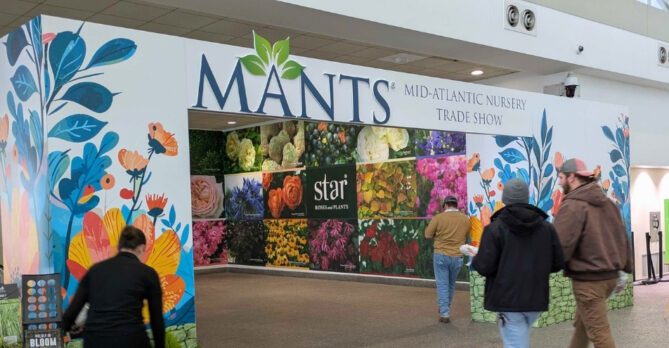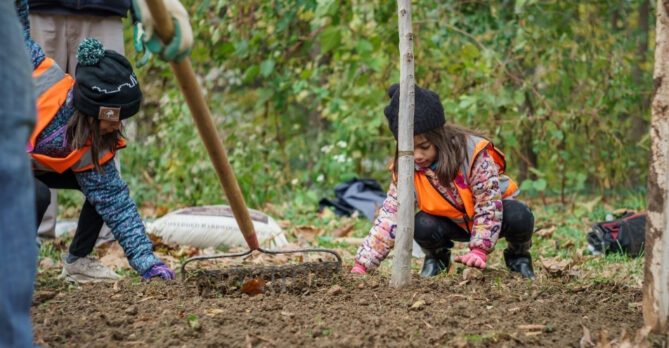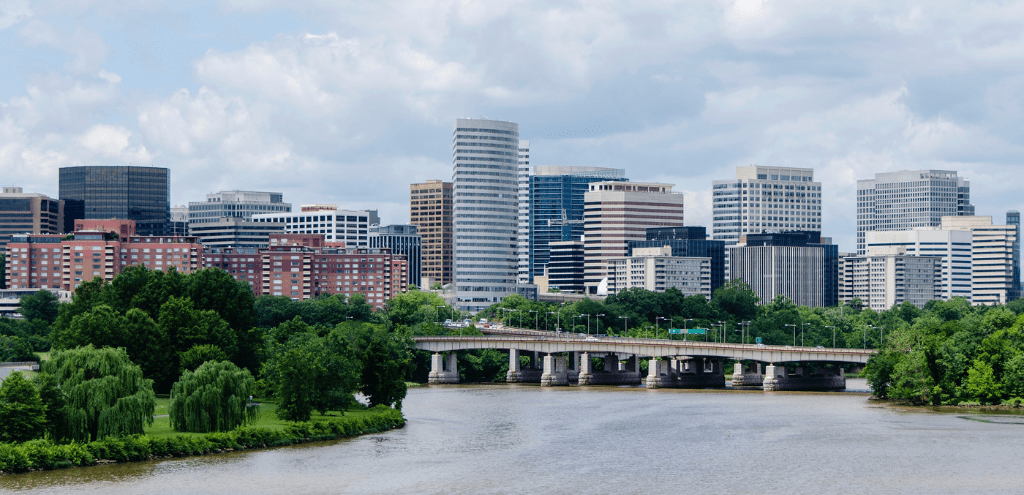
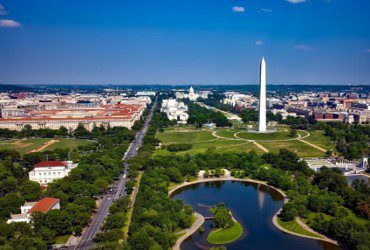 Exciting news for the urban forests of the DMV! The Metropolitan Washington Council of Governments (COG) Board of Directors has adopted a new regional tree canopy goal as part of efforts to meet climate objectives for 2030 and beyond. The target is to maintain a minimum of 50 percent tree canopy coverage across the metropolitan Washington area. This initiative is part of a broader strategy to reduce greenhouse gas emissions by 50 percent (from 2005 levels) by 2030.
Exciting news for the urban forests of the DMV! The Metropolitan Washington Council of Governments (COG) Board of Directors has adopted a new regional tree canopy goal as part of efforts to meet climate objectives for 2030 and beyond. The target is to maintain a minimum of 50 percent tree canopy coverage across the metropolitan Washington area. This initiative is part of a broader strategy to reduce greenhouse gas emissions by 50 percent (from 2005 levels) by 2030.
But what is the COG? Councils of Governments (COGs) are voluntary associations that represent member local governments, mainly cities and counties, that seek to provide cooperative planning, coordination, and technical assistance on issues of mutual concern that cross jurisdictional lines. In this sense, COGs serve to develop consensus on many issues that need to be addressed in a subregional or regional context. This COG represents 24 local communities that spread out from the District of Columbia, Arlington, and Alexandria and includes surrounding counties, cities and towns.
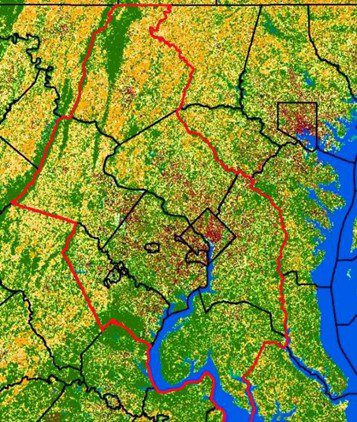
(Chesapeake Bay Program Land Use/Land Cover Project 2022)
We recently had the chance to speak with Michael Knapp, a plan reviewer with the Montgomery County Department of Permitting Services, retired Director of the Fairfax County Urban Forest Management Division, and current chair of the Regional Tree Canopy Subcommittee at the Council of Governments (COG). Knapp was able to give us valuable insight into the origins and importance behind the COG decision.
While the decision may seem sudden, the 50 percent tree canopy goal has been in the works for decades. “We’ve actually been talking about the concept of a regional tree canopy goal at COG since around 2006,” Knapp shared. “The goal is almost 20 years in the making, but it really gained traction in 2014 when COG formed an ad-hoc committee comprised of local urban forestry officials to identify tree-related programs and practices that could be used to support regional air and water quality efforts. So yes, it took almost 20 years of committee work, and on-going release of peer-reviewed research that clearly demonstrates the relationship between trees and our quality of life and environmental health to turn a good idea into an adopted goal.”
Fortunately, around this time, local organizations and agencies began to adopt their own canopy goals. Washington, DC adopted the hefty goal of 40% tree canopy by 2032 back in 2011, a truly ambitious milestone considering the density of the metropolitan area. Nevertheless, the nation’s capital may stand as the inspiration for the new regional goal we’re seeing today. But now that we have the 50% tree canopy goal – the real work begins. “Our challenge is to actually turn this goal into a reality over the next 26 years – to not let it collect dust on a shelf,” said Knapp.
 As we know, trees are crucial for the environment, offering benefits like reducing air pollution, providing shade, cooling urban areas, improving water quality, enhancing biodiversity, and contributing to more attractive and livable communities. According to the Chesapeake Bay Program, the region’s tree canopy was at 49.6 percent in 2023, down from 51.3 percent in 2014. The area loses an average of 4,383 acres of tree canopy annually due to development and other factors, which could result in a canopy coverage drop to 44.4 percent by 2050 if the trend continues.
As we know, trees are crucial for the environment, offering benefits like reducing air pollution, providing shade, cooling urban areas, improving water quality, enhancing biodiversity, and contributing to more attractive and livable communities. According to the Chesapeake Bay Program, the region’s tree canopy was at 49.6 percent in 2023, down from 51.3 percent in 2014. The area loses an average of 4,383 acres of tree canopy annually due to development and other factors, which could result in a canopy coverage drop to 44.4 percent by 2050 if the trend continues.
While 50 percent may seem like an ambitious goal, it was a research-based decision. Knapp was able to shine some light on this for us, “Using the Chesapeake Conservancy data, local land use and transportation plans, zoning maps, regional population projections and green infrastructure plans, we determined that it would be feasible to support a regional tree canopy coverage in 45 to 50 percent range for the foreseeable future. However, in order to maintain this level of coverage, COG jurisdictions will need to set local canopy goals that support the regional goal, take stronger steps to conserve their existing forest and tree resources, and to inspire their citizens to plant new trees and to take care of the trees in their yards and neighborhoods.”
 There are also a lot of advantages in jurisdictions working together to look at managing the areas forest and trees as a group. “Pursuing a regional goal and management plan could allow us to obtain certain efficiencies and a more effective way to address mutual concerns,” said Knapp. “For example, the ability to control forest pests and diseases who don’t pay attention to geopolitical boundaries! If you have one jurisdiction treating a widespread disease and another isn’t, that could have serious implications for prolonging the spread of the disease and not being able to control it both at the local and regional level.”
There are also a lot of advantages in jurisdictions working together to look at managing the areas forest and trees as a group. “Pursuing a regional goal and management plan could allow us to obtain certain efficiencies and a more effective way to address mutual concerns,” said Knapp. “For example, the ability to control forest pests and diseases who don’t pay attention to geopolitical boundaries! If you have one jurisdiction treating a widespread disease and another isn’t, that could have serious implications for prolonging the spread of the disease and not being able to control it both at the local and regional level.”
To support this goal, the COG Board recommends that local jurisdictions use the “Conserving Trees and Forests in Metropolitan Washington” report to develop action plans for tree canopy efforts. The Climate, Energy, and Environment Policy Committee (CEEPC) and the Regional Tree Canopy Subcommittee (RTCS) will regularly evaluate progress every five years. “There’s just so many variables there in terms of land use, the effects of the economy, transportation, housing, and all sorts of things,” Knapp shared. “We talked about it and decided to examine the canopy levels associated with different land uses and degrees of population and urbanization. We came up with an approach based on taking smaller piecemeal steps over time in pursuit of the larger goal. This involved developing smaller geographic scale goals that ultimately support the regional goal. It’s like the saying that’s often attributed to Ben Franklin, ‘If you take care of the pennies, the dollars will take care of themselves.’ In other words, if we take care of local tree canopy goals, the larger canopy goal will take care of itself.”
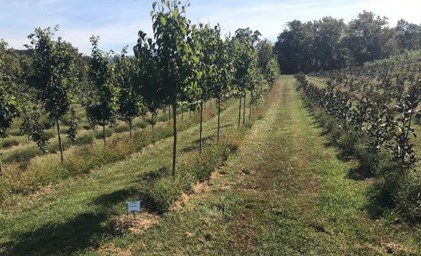 Moving forward, COG will share the new report with area jurisdictions and provide guidance on creating tailored Tree Canopy Action Plans. A regional tree action plan will be released early next year. Regular reassessment of the regional goal and supporting target goals will ensure the prioritization of trees as essential for sustainable development and environmental stewardship.
Moving forward, COG will share the new report with area jurisdictions and provide guidance on creating tailored Tree Canopy Action Plans. A regional tree action plan will be released early next year. Regular reassessment of the regional goal and supporting target goals will ensure the prioritization of trees as essential for sustainable development and environmental stewardship.
When looking towards the future success of the COG goal and trees being planted, Knapp shared this sentiment with us:
“I am hopeful, but we need buy-in from everyone. Local governments cannot even come close to achieving this goal on their own. The goal is not mandated, it’s a voluntarily adopted goal. We will need all sorts of partners from different walks of life to succeed! Most of the land that is plantable space for trees is owned by private citizens. Most of the land use in the region is low to medium density residential areas where people live. So, it’s going to be a major challenge engaging people on this. And where will all the trees come from? Will the nursery industry and non-profits that grow trees be able to provide the level of trees that will be needed over the next 26 years?
We don’t want the canopy goal to just sit on a shelf and fade away after a few years. You know, there’s always going to be this excitement for the first two or three months once something like this is adopted. But what we are working on next is a regional tree action plan to help make the plan a reality. We’re writing out a series of recommendations on how local governments can maximize tree conservation within their existing programs. But also, how to engage the demographics that we are going to have to instill a sense of ownership in and convince them that it is in their best interest and the best interest of their children to get outside and plant one or two trees in their yard and to also properly care for the trees they may already have.
It’s very difficult to convince people to look up from their day-to-day activities, their kids, and their jobs, – you know folks that are just taking care of their homes, paying their bills etc., – and convince them it’s in their best interest and to do this simple act of planting a tree – and doing that properly, and in the right place.
I suspect that these major climate change related events are happening and even increasing. that the societal perspective is going to start changing very quickly over the next few years. People are aware of what is going on. Reading and seeing all these reports, you know, about that the effects of flooding in communities that rarely experience it is just crazy, and the severity of recent heat waves all around the planet, and the incremental sea level rise – if you’re like me – seeing all those impacts of climate change can make you feel like you’re just floating in this huge river being carried downstream without much you as an individual can do or change to fight, or even slow the current.
So, if you are offered something like this that’s relatively simple, that can have a composite aggregate impact on environmental quality, human health, and climate change then I think it’s going to become more and more popular. And now, or maybe just five years from now doing things like planting trees, taking a bike to work, or just turning off lights that are not in use is going to be simple ideas whose time has finally arrived.”
